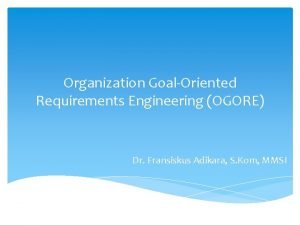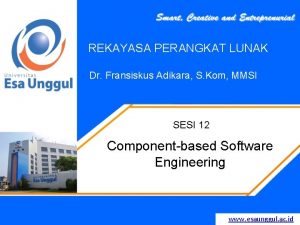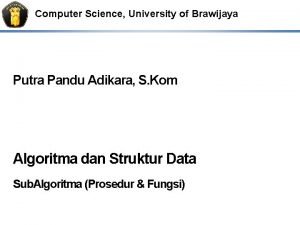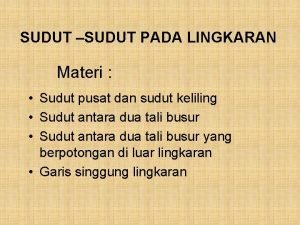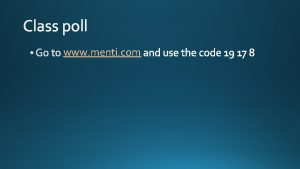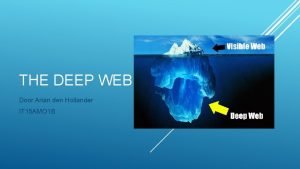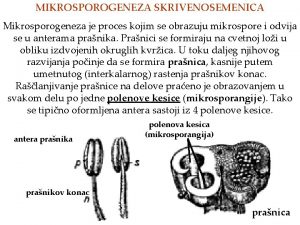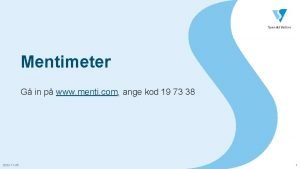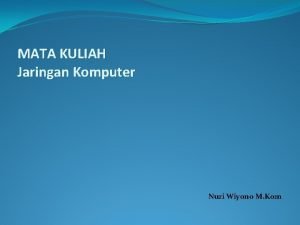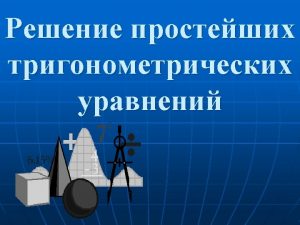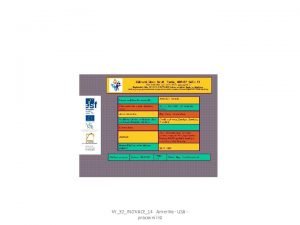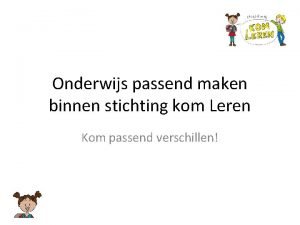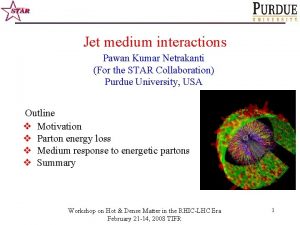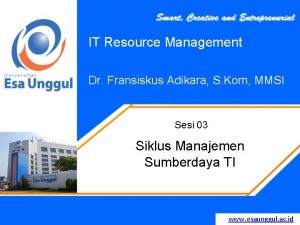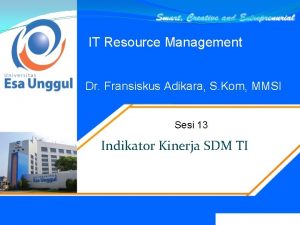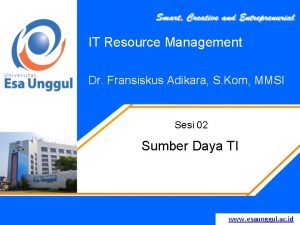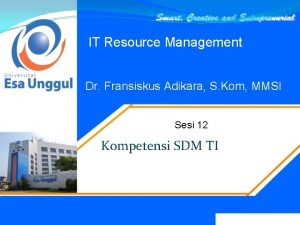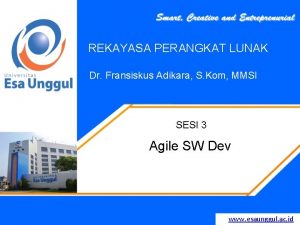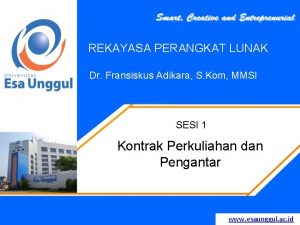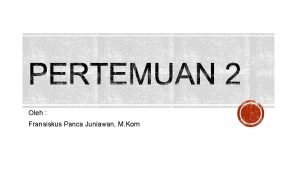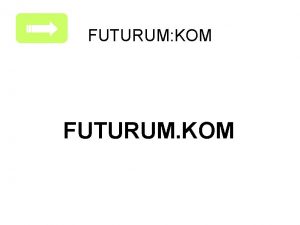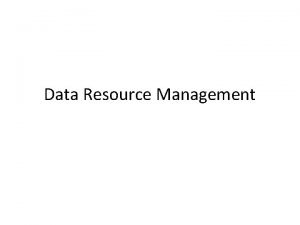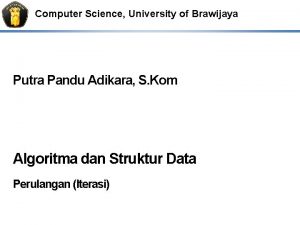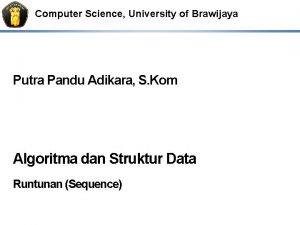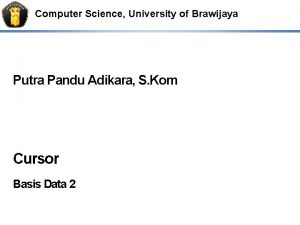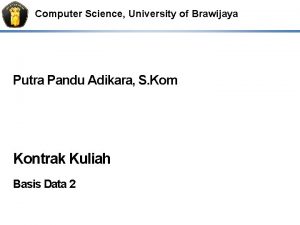IT Resource Management Dr Fransiskus Adikara S Kom




























- Slides: 28

IT Resource Management Dr. Fransiskus Adikara, S. Kom, MMSI Sesi 04 Information Management System www. esaunggul. ac. id

Learning Objectives Identify and describe important features of organizations that managers need to know about in order to build and use information systems successfully. Demonstrate how Porter’s competitive forces model helps companies develop competitive strategies using information systems. Explain how the value chain and value web models help businesses identify opportunities for strategic information system applications. www. esaunggul. ac. id

Learning Objectives (cont. ) • Demonstrate how information systems help businesses use synergies, core competencies, and network-based strategies to achieve competitive advantage. • Assess the challenges posed by strategic information systems and management solutions. www. esaunggul. ac. id

Will Sears’s Technology Strategy Work This Time? Problem: Fading brand, powerful competitors, technology costs Solutions: – Customer data mining to improve customer intimacy, design sales floors, implement customer programs and promotions Demonstrates IT’s central role in defining competitive strategy www. esaunggul. ac. id

Organizations and Information Systems Information technology and organizations influence each other – Relationship influenced by organization’s • Structure • Business processes • Politics • Culture • Environment • Management decisions www. esaunggul. ac. id

THE TWO-WAY RELATIONSHIP BETWEEN ORGANIZATIONS AND INFORMATION TECHNOLOGY This complex two-way relationship is mediated by many factors, not the least of which are the decisions made —or not made—by managers. Other factors mediating the relationship include the organizational culture, structure, politics, business processes, and environment. FIGURE 3 -1 www. esaunggul. ac. id

Organizations and Information Systems • What is an organization? – Technical definition: • Formal social structure that processes resources from environment to produce outputs • A formal legal entity with internal rules and procedures, as well as a social structure – Behavioral definition: • A collection of rights, privileges, obligations, and responsibilities that is delicately balanced over a period of time through conflict and conflict resolution www. esaunggul. ac. id

THE TECHNICAL MICROECONOMIC DEFINITION OF THE ORGANIZATION FIGURE 3 -2 In the microeconomic definition of organizations, capital and labor (the primary production factors provided by the environment) are transformed by the firm through the production process into products and services (outputs to the environment). The products and services are consumed by the environment, which supplies additional capital and labor as inputs in the feedback loop. www. esaunggul. ac. id

THE BEHAVIORAL VIEW OF ORGANIZATIONS The behavioral view of organizations emphasizes group relationships, values, and structures. FIGURE 3 -3 www. esaunggul. ac. id

Organizations and Information Systems Features of organizations • Use of hierarchical structure • Accountability, authority in system of impartial decision making • Adherence to principle of efficiency • Routines and business processes • Organizational politics, culture, environments, and structures www. esaunggul. ac. id

Organizations and Information Systems Routines and business processes • Routines (standard operating procedures) • Precise rules, procedures, and practices developed to cope with virtually all expected situations • Business processes: Collections of routines • Business firm: Collection of business processes www. esaunggul. ac. id

ROUTINES, BUSINESS PROCESSES, AND FIRMS All organizations are composed of individual routines and behaviors, a collection of which make up a business process. A collection of business processes make up the business firm. New information system applications require that individual routines and business processes change to achieve high levels of organizational performance. FIGURE 3 -4 www. esaunggul. ac. id

Organizations and Information Systems Organizational politics • Divergent viewpoints lead to political struggle, competition, and conflict. • Political resistance greatly hampers organizational change. www. esaunggul. ac. id

Organizations and Information Systems Organizational culture: • Encompasses set of assumptions that define goal and product • What products the organization should produce • How and where it should be produced • For whom the products should be produced • May be powerful unifying force as well as restraint on change www. esaunggul. ac. id

Organizations and Information Systems Organizational environments: • Organizations and environments have a reciprocal relationship. • Organizations are open to, and dependent on, the social and physical environment. • Organizations can influence their environments. • Environments generally change faster than organizations. • Information systems can be instrument of environmental scanning, act as a lens. www. esaunggul. ac. id

ENVIRONMENTS AND ORGANIZATIONS HAVE A RECIPROCAL RELATIONSHIP FIGURE 3 -5 Environments shape what organizations can do, but organizations can influence their environments and decide to change environments altogether. Information technology plays a critical role in helping organizations perceive environmental change and in helping organizations act on their environment. www. esaunggul. ac. id

Organizations and Information Systems Disruptive technologies – Technology that brings about sweeping change to businesses, industries, markets – Examples: personal computers, word processing software, the Internet, the Page. Rank algorithm – First movers and fast followers • First movers—inventors of disruptive technologies • Fast followers—firms with the size and resources to capitalize on that technology www. esaunggul. ac. id

Organizations and Information Systems • 5 basic kinds of organizational structure – Entrepreneurial: • Small start-up business – Machine bureaucracy: • Midsize manufacturing firm – Divisionalized bureaucracy: • Fortune 500 firms – Professional bureaucracy: • Law firms, school systems, hospitals – Adhocracy: • Consulting firms www. esaunggul. ac. id

Organizations and Information Systems • Other organizational features – Goals • Coercive, utilitarian, normative, and so on – Constituencies – Leadership styles – Tasks – Surrounding environments www. esaunggul. ac. id

How Information Systems Impact Organizations and Business Firms • Economic impacts – IT changes relative costs of capital and the costs of information – Information systems technology is a factor of production, like capital and labor – IT affects the cost and quality of information and changes economics of information • Information technology helps firms contract in size because it can reduce transaction costs (the cost of participating in markets) – Outsourcing www. esaunggul. ac. id

How Information Systems Impact Organizations and Business Firms Transaction cost theory – Firms seek to economize on transaction costs (the costs of participating in markets). • Vertical integration, hiring more employees, buying suppliers and distributors – IT lowers market transaction costs for firm, making it worthwhile for firms to transact with other firms rather than grow the number of employees. www. esaunggul. ac. id

How Information Systems Impact Organizations and Business Firms • Agency theory: – Firm is nexus of contracts among self-interested parties requiring supervision. – Firms experience agency costs (the cost of managing and supervising) which rise as firm grows. – IT can reduce agency costs, making it possible for firms to grow without adding to the costs of supervising, and without adding employees. www. esaunggul. ac. id

How Information Systems Impact Organizations and Business Firms • Organizational and behavioral impacts – IT flattens organizations • Decision making is pushed to lower levels. • Fewer managers are needed (IT enables faster decision making and increases span of control). – Postindustrial organizations • Organizations flatten because in postindustrial societies, authority increasingly relies on knowledge and competence rather than formal positions. www. esaunggul. ac. id

FLATTENING ORGANIZATIONS Information systems can reduce the number of levels in an organization by providing managers with information to supervise larger numbers of workers and by giving lowerlevel employees more decisionmaking authority. FIGURE 3 -6 www. esaunggul. ac. id

How Information Systems Impact Organizations and Business Firms Organizational resistance to change – Information systems become bound up in organizational politics because they influence access to a key resource—information. – Information systems potentially change an organization’s structure, culture, politics, and work. – Most common reason for failure of large projects is due to organizational and political resistance to change. www. esaunggul. ac. id

ORGANIZATIONAL RESISTANCE AND THE MUTUALLY ADJUSTING RELATIONSHIP BETWEEN TECHNOLOGY AND THE ORGANIZATION Implementing information systems has consequences for task arrangements, structures, and people. According to this model, to implement change, all four components must be changed simultaneously. FIGURE 3 -7 www. esaunggul. ac. id

How Information Systems Impact Organizations and Business Firms The Internet and organizations – The Internet increases the accessibility, storage, and distribution of information and knowledge for organizations. – The Internet can greatly lower transaction and agency costs. • Example: Large firm delivers internal manuals to employees via a corporate Web site, saving millions of dollars in distribution costs www. esaunggul. ac. id

How Information Systems Impact Organizations and Business Firms • Organizational factors in planning a new system: – Environment – Structure • Hierarchy, specialization, routines, business processes – Culture and politics – Type of organization and style of leadership – Main interest groups affected by system; attitudes of end users – Tasks, decisions, and business processes the system will assist www. esaunggul. ac. id
 Ogore
Ogore Fransiskus adikara
Fransiskus adikara Kom heer jezus kom
Kom heer jezus kom Putra pandu adikara
Putra pandu adikara Putra pandu adikara
Putra pandu adikara Resource leveling is the approach to even out the peaks of
Resource leveling is the approach to even out the peaks of Perbedaan resource loading dan resource leveling
Perbedaan resource loading dan resource leveling Sudut sudut dalam lingkaran
Sudut sudut dalam lingkaran Lief vrouwke ik kom niet om te bidden
Lief vrouwke ik kom niet om te bidden Wwwmenti.come
Wwwmenti.come Hoe kom je op het dark web
Hoe kom je op het dark web Enstase
Enstase U kom delu cveta se stvara polen
U kom delu cveta se stvara polen Menti.com
Menti.com Subnet class b ditunjukan dengan
Subnet class b ditunjukan dengan Go to www.menti com
Go to www.menti com дубаи континент
дубаи континент Sinta swastikawara, m.i.kom
Sinta swastikawara, m.i.kom Po kom je pojmenována amerika
Po kom je pojmenována amerika Sistem informasi geografis ahmat adil, s.kom., m.sc.
Sistem informasi geografis ahmat adil, s.kom., m.sc. Kom til mig alle i som slider jer trætte
Kom til mig alle i som slider jer trætte Www.memti.com
Www.memti.com Basia sapińska i alek dawidowski
Basia sapińska i alek dawidowski Sinstipes
Sinstipes Majesteit glansryke heerlikheid
Majesteit glansryke heerlikheid Stichting kom leren
Stichting kom leren Kumar kom jet
Kumar kom jet Kom hitt
Kom hitt континент египта
континент египта
